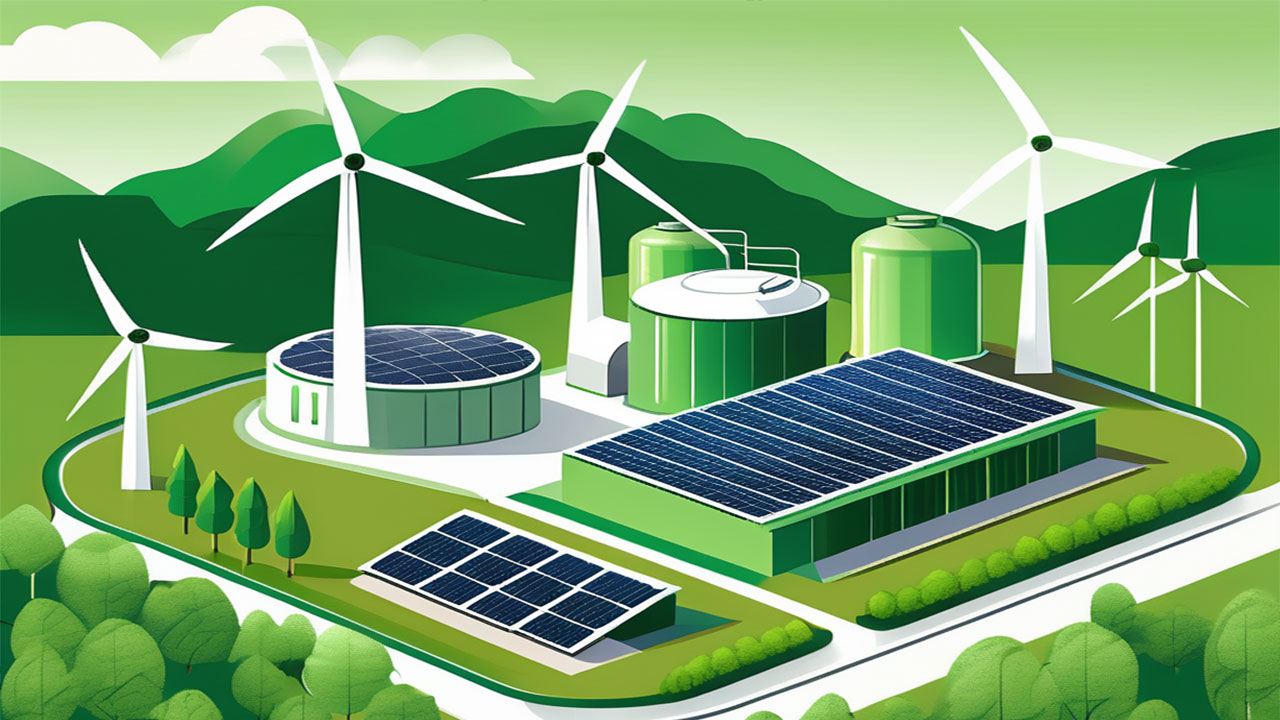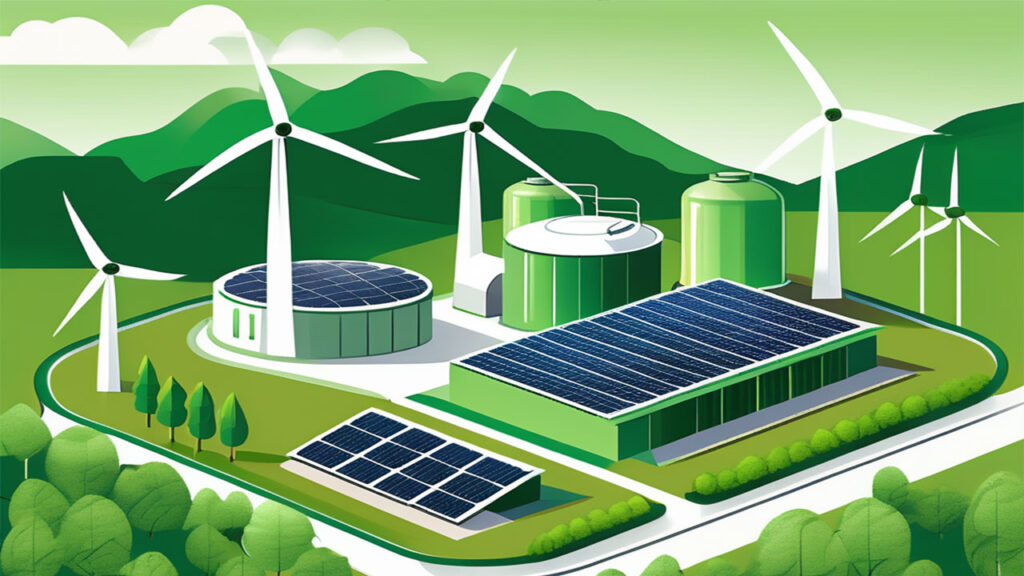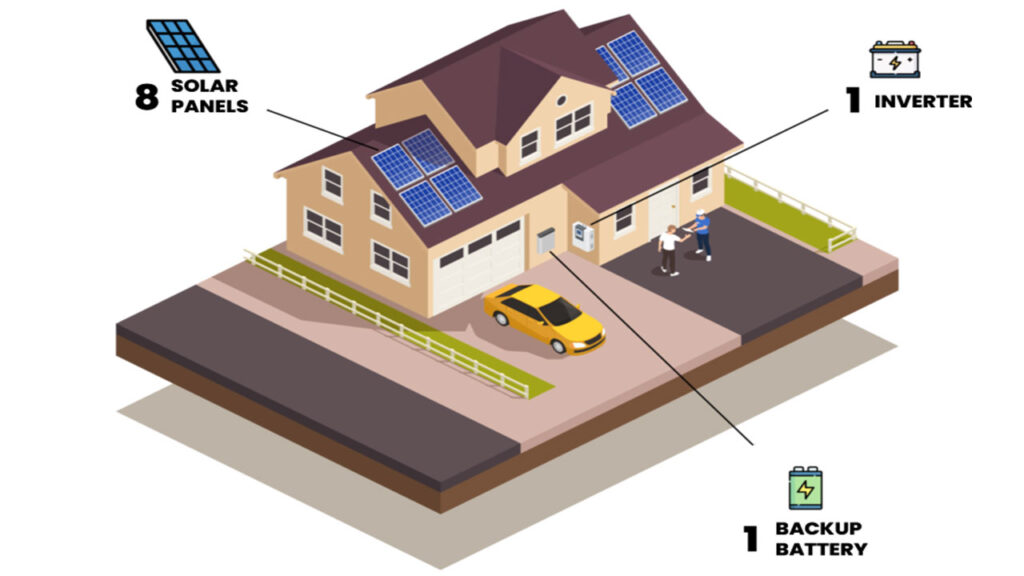Using Green Energy for 24/7 Food Industry
- Hossein_barati
- Article

Using Green Energy in the food industry is not only essential for reducing the industry’s carbon footprint but also for ensuring a sustainable future. In this article, we will explore the importance of green energy in the food industry and its potential to revolutionize the way we produce and consume food.
Using Green Energy for 24/7 Food Industry Companies: A Sustainable Solution
The food industry plays a crucial role in our daily lives, providing us with the nourishment we need to survive and thrive. However, the growing concerns about climate change and environmental sustainability have prompted a shift towards green energy sources in various sectors, including the food industry. This transition to green energy is not only essential for reducing the industry’s carbon footprint but also for ensuring a sustainable future.

Understanding the Importance of Using Green Energy in the food industry
Green energy, also known as renewable energy, is derived from natural sources that are constantly replenished, such as sunlight, wind, and water. The food industry, with its round-the-clock operations and heavy energy demands, can greatly benefit from adopting green energy solutions. By harnessing these sustainable energy sources, food industry companies can significantly reduce their reliance on fossil fuels and minimize their environmental impact.
Green energy plays a pivotal role in promoting sustainability in the food industry by reducing greenhouse gas emissions and conserving valuable resources. It offers numerous advantages, including a lower carbon footprint, improved air quality, and reduced dependence on non-renewable energy sources. Embracing green energy not only aligns with the global efforts to combat climate change but also provides significant economic and social benefits.
The Role of Green Energy in Sustainability
Green energy is a key pillar of sustainability in the food industry. By shifting towards renewable energy sources, companies can contribute to a more balanced and harmonious coexistence with the environment. By reducing the use of fossil fuels and minimizing greenhouse gas emissions, green energy helps mitigate climate change and its adverse effects.
Moreover, green energy promotes resource conservation and reduces the strain on natural resources. Traditional energy generation methods often require the extraction and combustion of finite resources, such as coal and natural gas. In contrast, green energy harnesses the power of abundant and infinitely available sources, ensuring long-term sustainability and resilience.
The Current Energy Landscape in the Food Industry
Despite the growing awareness of environmental issues, the food industry still heavily relies on conventional energy sources. This dependence on non-renewable energy poses significant challenges, including rising energy costs, fluctuating supply, and environmental degradation.
However, the food industry is gradually recognizing the importance of transitioning to green energy solutions. Many companies are actively exploring innovative ways to integrate renewable energy sources into their operations. From solar farms and wind turbines to hydropower installations, the adoption of green energy technologies is gaining momentum within the food industry.
One example of a company leading the way in green energy adoption is a large food processing plant located in the heart of a bustling city. This plant has implemented a comprehensive green energy strategy that includes a combination of solar panels and wind turbines. The solar panels are strategically placed on the roof of the plant, taking advantage of the abundant sunlight in the area. These panels generate a significant amount of electricity, which is used to power various operations within the plant, such as food processing and refrigeration.
In addition to solar energy, the plant has also installed several wind turbines on its premises. These turbines harness the power of the wind to generate clean electricity, further reducing the plant’s reliance on traditional energy sources. The combination of solar and wind energy has not only reduced the plant’s carbon footprint but has also resulted in substantial cost savings.
Furthermore, the plant has implemented an innovative energy storage system that allows excess energy generated during peak production hours to be stored for later use. This ensures a constant and reliable energy supply, even during periods of low solar or wind activity. The energy storage system also helps the plant optimize its energy usage and reduce wastage, contributing to overall energy efficiency.
By adopting green energy solutions, this food processing plant has not only reduced its environmental impact but has also gained a competitive edge in the industry. The company’s commitment to sustainability has resonated with consumers, who are increasingly seeking out environmentally conscious brands. This has led to increased customer loyalty and a positive brand image, further driving the company’s success.
Exploring Different Types of Green Energy
When it comes to green energy, there is a wide array of options available for the food industry to explore. Each renewable energy source has its unique characteristics and benefits. Let’s take a closer look at some of the most promising forms of green energy:
Solar Power and Its Potential
Solar power harnesses the energy generated by the sun through the use of photovoltaic (PV) panels. This form of green energy is particularly suitable for the food industry as it can be seamlessly integrated into existing infrastructure. By installing solar panels on rooftops or utilizing open spaces, food industry companies can generate clean and sustainable energy to power their operations. Solar power also offers the potential for energy storage, ensuring a continuous supply during periods of low sunlight.
Wind Energy: An Untapped Resource
Wind energy is another promising source that remains largely untapped within the food industry. By strategically installing wind turbines on suitable land or coastal areas, companies can harness the immense power of the wind to generate electricity. Wind energy is clean, renewable, and abundant, making it an ideal solution for food industry companies looking to diversify their energy sources.
The Power of Hydroelectric Energy
Hydroelectric energy, derived from the force of flowing or falling water, has long been recognized as a reliable and efficient renewable energy source. Although hydroelectric power is commonly associated with large-scale dams, food industry companies can leverage smaller-scale hydroelectric installations, such as run-of-river systems or micro-hydro systems, to generate clean energy.
But did you know that hydroelectric energy can also have additional benefits beyond electricity generation? The presence of hydroelectric power plants can create new recreational opportunities, such as boating, fishing, and wildlife observation. These activities can not only boost local tourism but also contribute to the preservation of natural habitats and biodiversity.
Furthermore, hydroelectric power plants can play a crucial role in water management. By regulating the flow of water, these plants can help control flooding and ensure a stable water supply for agricultural purposes. This dual functionality of hydroelectric energy makes it a versatile and valuable asset for the food industry.
The Transition to Green Energy: Challenges and Solutions
While the advantages of green energy adoption in the food industry are evident, the transition does not come without challenges. One of the primary hurdles is the initial implementation costs associated with installing and integrating renewable energy systems.
However, the long-term financial benefits of green energy far outweigh the initial investment. By reducing energy costs and minimizing their carbon footprint, food industry companies can realize substantial savings while contributing to a more sustainable future.
Overcoming Initial Implementation Hurdles
To overcome the initial challenges, companies can explore various financing options, such as government incentives, grants, and loans. Collaborating with renewable energy experts and leveraging their expertise can also streamline the implementation process and ensure maximum efficiency.
Ensuring Continuous Energy Supply
Another concern during the transition to green energy is ensuring a continuous and reliable energy supply. Food industry companies operate 24/7, and any disruptions in energy availability can have severe consequences.
To mitigate this risk, companies can implement advanced energy management systems that optimize energy usage, storage, and distribution. Additionally, integrating multiple green energy sources, such as solar and wind, can ensure a more resilient and robust energy infrastructure.
The Economic Impact of Green Energy Adoption
Green energy adoption in the food industry not only benefits the environment but also has significant economic implications. Conducting a cost-benefit analysis is essential to understand the financial viability of transitioning to green energy.
Cost-Benefit Analysis of Green Energy
While the initial costs of implementing green energy systems may be higher than traditional energy sources, the long-term savings are substantial. Lower energy bills, tax incentives, and potential revenue generation from surplus energy can help offset the initial investment.
Long-Term Financial Benefits
Furthermore, adopting green energy technologies positions food industry companies as leaders in sustainability, attracting environmentally conscious consumers and investors. By aligning their brand with sustainability, companies can enhance their market competitiveness and secure a long-term sustainable future.
The Environmental and Social Impact of Green Energy
One of the most significant advantages of adopting green energy in the food industry is its positive environmental impact. By reducing carbon emissions and minimizing reliance on fossil fuels, green energy helps mitigate climate change and protect the environment for future generations.
Reducing Carbon Footprint
The food industry accounts for a significant portion of global greenhouse gas emissions. By embracing green energy, companies can substantially reduce their carbon footprint and contribute to global efforts to limit global warming.
Promoting Social Responsibility in the Food Industry
Green energy adoption also provides food industry companies with an opportunity to showcase their commitment to social responsibility. By investing in clean and sustainable energy sources, companies demonstrate their dedication to minimizing environmental impact and protecting the well-being of communities.

Conclusion of Using Green Energy in the food industry
Using Green Energy in the food industry is not only desirable but also necessary to ensure a sustainable future. With its 24/7 operations and energy-intensive processes, the food industry can significantly benefit from harnessing renewable energy sources. From solar power to wind and hydroelectric energy, the options are vast and offer numerous benefits for both the environment and the industry’s bottom line. By overcoming initial implementation hurdles, conducting a cost-benefit analysis, and recognizing the long-term financial and environmental advantages, food industry companies can pave the way towards a greener and more sustainable future.
Set up solar power station with Tabdil Energy Roshana equipment
Tabdil Energy Roshana is a company that can help you to easily set up solar power stations in your house, office and your company. This company also sells the Polycrystalline solar panel and Monocrystalline solar panel to Use clean solar energy.
Introducing Tabdil Energy Roshana
Tabdil Energy Roshana Group is trying to easily meet the needs of factories and homes by using clean solar energy. The use green solar energy as a renewable solar energy has been done in developed countries for years.
The purpose of our activity in this company is to promote the use of clean and renewable energy from the sun in domestic and power plant dimensions. In 1401 AH, the experienced and young team of Tabdil Energy succeeded in receiving a knowledge-based certificate from the Vice President for Research.

The main activities of Tabdil Energy Roshana company
One of the most important activities of this group is set up solar power station, installing a solar panel, setting up a photovoltaic power plant, installing a Solar energy inverter, installing a solar battery, setting up an On grid solar power plant or Off grid solar system, installing and setting up home solar electricity to Use reproducible energy or Use green energy or Use photovoltaic technology or Use solar UPS . You can easily refer to the products page of this collection and get to know our services and products well.
The use of solar energy, in addition to the beneficial environmental effects, can be a long-term investment with a very good profit. Tabdil Energy consultants are by your side to guide you by providing expert advice on setting up a home solar site, solar power plant, and also the benefits of investing in this field.



